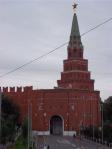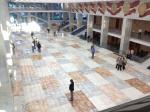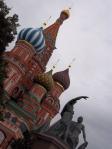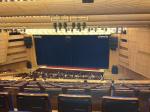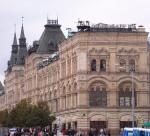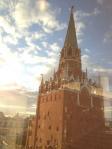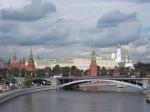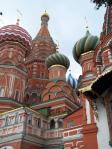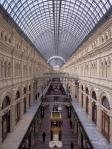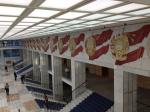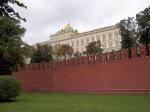It seems that my Great Uncle phoned my mom last Friday with a question: “What on earth is Craig doing in Moscow?” It would seem he got my postcard.
But I guess it’s a fair enough question, it’s not a place you necessarily expect someone to be.
Well, I don’t always like conventional holidays (no sh*t Sherlock) and I am lucky enough to have friends who teach abroad. So, as I hadn’t left the country in the past couple of years I thought it was high time I paid a couple of them a visit. This, then, is how I came up with a holiday that took me to Moscow, Vienna and Bratislava in the space of two weeks. To me this seems perfectly normal. Apparently not everyone agrees.
Russian visas aren’t the easiest to come by. Sure, it’s not hugely complicated, but it’s long and needlessly drawn out, meaning only those who really want (or need) to go have much chance of making it to the end. But I did, and a mere couple of flights later I found myself face to face with an extremely bored border guard who (not unlike myself) didn’t want to be at passport control at 6am.
Moscow is utterly fascinating: It’s utterly crazy, but painfully logical. Well planned, but not necessarily well thought out. Basically, Moscow is like no other city on the planet. No one bats an eyelid at a convoy of army trucks hurtling down an impossibly wide, one-way, city-centre ring road; just as it seems to escape everyone’s attention that a bright yellow Ferrari is hurtling down this speed-limit-less highway, weaving between hundreds of blacked out 4x4s and Soviet-era rust buckets.
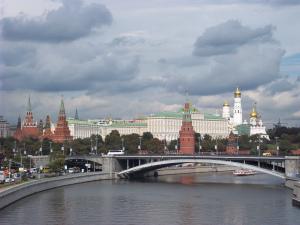
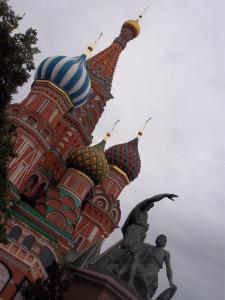
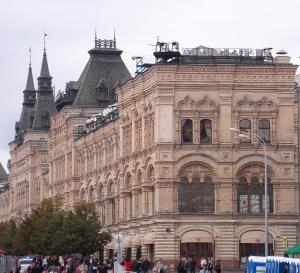
The enormous red walls of the Kremlin dominate the center of the city, warding off uninvited guests and making it perfectly clear that only those permitted may enter their realm. Luckily I was permitted on both my forays and on each occasion I was presented with treasure. The first time was to go to one of the Kremlin’s more recent additions, the State Kremlin Palace. Built in the early 60s as an arena in which to hold meetings and the annual congresses of the Communist party, the exterior of concrete and glass hides its brilliant
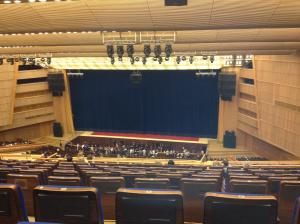
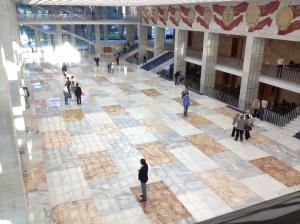
If the first trip was all about architectural and artistic treasure, then the second was all about real treasure. The Kremlin Armoury is no longer home to the collection of weaponry once said to be enough to kit-out 2,000 soldiers, but now holds the horde of the Russian State. Its treasures span the centuries and constitute the largest collection of gold and silver in the western world (if not the entire globe). From diamond studded, gold and silver plated covers for ancient bibles to a headdress for the statue of Mary made of gold and inset by two of the largest three emeralds in the world, the most valuable treasures of the Orthodox church take up two grand galleries. Another is filled with the crowns and thrones of the Tsars: Ivan the Terrible’s throne is covered in plates of carved ivory, whilst the fir-lined crowns sparkle with diamonds and every other gem imaginable. Sitting blissfully in another is the coronation dress of Catherine the Great and the old coronation gown, a flowing river of gold embroidered with the double-headed eagle and lined with white fur. Next door are the ornate state carriages made by the finest craftsmen around Europe, but up in the far corner of the top floor is the display that out-dazzles them all. Gifts given by visiting European ambassadors representing their finest craftsmanship and wealth – think everything from decorated cutlery to silver decanters shaped like metre-tall snow leopards, oh and a wine fountain crafted from gold in the style of a Parisian rococo-era fountain (as you do). I dare anyone to go there and not leave still blinking in amazement that such an incredible collection exists. But if you are there, don’t just look at the treasures – the Armoury building itself is a work of art and would be a treasured masterpiece, if it weren’t for its contents.
At night this part of town shines like a beacon, illuminated for all the city to see. Really it’s its own little cocoon of contradictory stories, tucked away in the center of a confusing city.
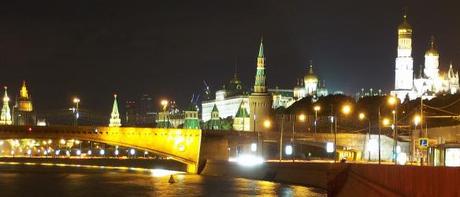
And that, well that is just the very center of the centre! To save this being the length of a book I will break here and talk about food, communist theme parks, butchers’ ponds and ‘Stalin Gothic’ in the next post.
Cr
